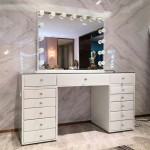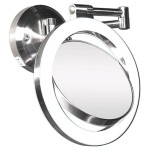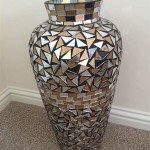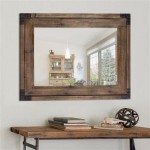Mirror Wall Brackets: A Comprehensive Guide
Mirror wall brackets are essential components for securely and aesthetically mounting mirrors to walls. They provide stability, prevent damage, and allow for customization in terms of mirror placement and style. Selecting the appropriate brackets is crucial for ensuring the long-term safety and visual appeal of any mirrored installation.
This article will explore the various aspects of mirror wall brackets, including their types, materials, installation methods, and factors to consider when choosing the right brackets for specific applications. Understanding these elements is crucial for both professionals and individuals undertaking home improvement projects involving mirrors.
Types of Mirror Wall Brackets
The market offers a diverse range of mirror wall brackets, each designed to accommodate specific mirror sizes, weights, and aesthetic preferences. Understanding these different types is essential for making an informed decision.
Clip-Style Brackets: These are arguably the most common type of mirror bracket. They consist of small, unobtrusive clips that grip the edges of the mirror, holding it securely against the wall. Clip-style brackets are available in various materials, including plastic, metal, and even clear acrylic. They often come in sets of four, with two at the bottom to support the mirror's weight and two at the top to secure its position. The advantage of clip-style brackets lies in their simplicity and relatively low cost. They are suitable for smaller to medium-sized mirrors and are particularly well-suited for contemporary and minimalist designs.
Plate-Style Brackets: These brackets involve attaching metal plates to the back of the mirror using adhesive or screws. The plates then slide onto corresponding brackets mounted on the wall. Plate-style brackets provide a more secure and concealed mounting solution compared to clip-style brackets. They are often used for larger and heavier mirrors, as they distribute the weight more evenly. The installation process for plate-style brackets is generally more involved, requiring precise measurements and careful alignment to ensure the mirror hangs straight and securely.
J-Channel Brackets: J-channel brackets consist of two metal channels, one mounted to the wall and the other attached to the back of the mirror. The mirror is then slid into the wall-mounted channel, creating a secure and almost seamless appearance. J-channel brackets are particularly well-suited for frameless mirrors, as they minimize the visible hardware. They offer excellent support and are capable of holding heavier mirrors. However, installation requires precise alignment, and access to the back of the mirror is necessary for attaching the channel.
Decorative Brackets: As the name suggests, these brackets are designed not only to support the mirror but also to enhance its aesthetic appeal. Decorative brackets come in a wide variety of styles, from ornate and traditional to sleek and modern. They can be made from materials such as cast iron, brass, or wrought iron and often feature intricate designs. Decorative brackets are typically more expensive than other types, but they can add a unique and stylish touch to a room. The choice of decorative brackets should complement the overall design of the mirror and the surrounding décor.
Tilt Mirror Brackets: These specialized brackets allow the mirror to be tilted at an angle, providing greater flexibility in viewing and allowing adjustments to be made based on the user's height or preference. Tilt mirror brackets are commonly used in bathrooms and dressing rooms. They typically feature a pivot mechanism that allows the mirror to be adjusted easily. The weight capacity of tilt mirror brackets should be carefully considered to ensure they can safely support the mirror at various angles.
Materials Used in Mirror Wall Brackets
The material composition of mirror wall brackets directly affects their durability, weight capacity, and aesthetic appeal. The most common materials include:
Metal: Metal brackets, typically made from steel, stainless steel, or aluminum, are known for their strength and durability. Steel brackets offer excellent load-bearing capacity and are suitable for heavy mirrors. Stainless steel brackets are resistant to corrosion, making them ideal for use in bathrooms and other humid environments. Aluminum brackets are lightweight and rust-resistant, making them a versatile option for various applications. Metal brackets often come with a powder-coated or plated finish to enhance their appearance and provide additional protection against corrosion.
Plastic: Plastic brackets are a cost-effective option for lighter mirrors. They are typically made from durable polymers such as ABS plastic or polycarbonate. Plastic brackets are resistant to moisture and can be easily molded into various shapes and designs. However, they are generally not as strong as metal brackets and are not suitable for heavy mirrors. Plastic brackets are often used with clip-style mounting systems for smaller mirrors in bathrooms or bedrooms.
Wood: Wooden brackets offer a classic and elegant aesthetic. They are typically made from hardwoods such as oak, maple, or cherry. Wooden brackets can be stained or painted to match the surrounding décor. However, they are susceptible to moisture damage, making them less suitable for use in bathrooms or other humid environments. Wooden brackets are often used with decorative mirrors to enhance their overall appearance.
Acrylic: Acrylic brackets, often transparent or translucent, provide a minimalist and modern look. They are lightweight and resistant to UV radiation, preventing yellowing over time. Acrylic brackets are often used with frameless mirrors to create a seamless and unobtrusive mounting solution. However, they are not as strong as metal brackets and are more prone to scratching. The clarity of acrylic brackets can enhance the visual appeal of the mirror, making it appear to float on the wall.
Installation Considerations
Proper installation is crucial for ensuring the safety and stability of a mirror mounted with wall brackets. Several factors should be considered during the installation process.
Wall Type: The type of wall to which the mirror will be mounted significantly impacts the choice of mounting hardware. For drywall, it is essential to use anchors that can securely grip the wallboard and distribute the weight of the mirror. Wall anchors come in various types, including toggle bolts, molly bolts, and self-drilling anchors. For stud walls, it is ideal to mount the brackets directly to the studs, which provide the strongest support. If studs are not available at the desired location, heavy-duty wall anchors should be used. For concrete or masonry walls, masonry anchors are required. These anchors are designed to expand within the drilled hole, providing a secure grip.
Weight Capacity: The weight capacity of the chosen brackets must exceed the weight of the mirror. It is crucial to consult the manufacturer's specifications to ensure that the brackets can safely support the mirror. Overloading the brackets can lead to failure, resulting in damage to the mirror and potential injury. When selecting brackets, it is always advisable to choose brackets with a higher weight capacity than the mirror's actual weight to provide a safety margin.
Mirror Size and Shape: The size and shape of the mirror influence the number and placement of brackets. Larger mirrors require more brackets to distribute the weight evenly. For rectangular or square mirrors, brackets should be placed at regular intervals along the top and bottom edges. For irregularly shaped mirrors, it may be necessary to use custom-designed brackets or to adjust the placement of standard brackets to ensure adequate support. The mirror's dimensions should be carefully measured to determine the optimal bracket placement.
Leveling: Ensuring that the mirror is level during installation is essential for achieving a professional and aesthetically pleasing result. A spirit level should be used to verify that the brackets are aligned horizontally and vertically. Adjustments may be necessary to compensate for uneven wall surfaces. Before tightening the screws, double-check the level to ensure that the mirror will hang straight. Using a laser level can simplify the leveling process, particularly for larger mirrors.
Safety Precautions: When installing mirror wall brackets, it is essential to take appropriate safety precautions. Wear safety glasses to protect your eyes from debris while drilling. Use gloves to protect your hands from sharp edges. When working with power tools, follow the manufacturer's instructions carefully. If you are unsure about any aspect of the installation process, it is advisable to consult a professional.
Choosing the Right Mirror Wall Brackets
Selecting the appropriate mirror wall brackets requires careful consideration of several factors, including the mirror's weight and size, the wall type, and the desired aesthetic. By taking these factors into account, it is possible to choose brackets that provide both secure support and visual appeal.
Evaluate the mirror's weight and dimensions. This information is crucial for determining the required weight capacity and the number of brackets needed. Consult the manufacturer's specifications for the brackets to ensure they can safely support the mirror. Consider the shape of the mirror and how it will affect the placement of the brackets.
Assess the wall type. Different wall types require different types of anchors. Choose anchors that are appropriate for the wall material and that can provide a secure grip. If possible, mount the brackets directly to wall studs for maximum support. If studs are not available, use heavy-duty wall anchors that can distribute the weight of the mirror effectively.
Consider the desired aesthetic. The brackets should complement the style of the mirror and the overall décor of the room. Choose brackets that are visually appealing and that do not detract from the mirror's beauty. Consider the finish of the brackets and how it will coordinate with the mirror frame and other hardware in the room.
Consider the ease of installation. Some brackets are easier to install than others. If you are not experienced with home improvement projects, choose brackets that are relatively simple to install. Read the installation instructions carefully before beginning the project. If you are unsure about any aspect of the installation process, consult a professional.
By carefully considering these factors, it is possible to choose mirror wall brackets that provide both secure support and enhance the aesthetic appeal of the mirror.

Mirror Clamp Support Wall Mounted Glass Bracket Heavy Duty

Mirror Hanging Brackets Strip Wall Mounts For Mirrors 1m 2m Rail

Simple Mount 30 In Heavy Duty Mirror And Picture Hanger Hm 30d The Home Depot

L Brackets Surface Mounted

12 Clear Mirror Holder Clips Wall Mounting Transpa Brackets S Anchors Com

Mirror Picture Hanging Kit Clip Set Fitting Wall Brackets Adjus Sisi Ltd

8 Transpa Mirror Clips Wall Mounting Set Clear Brackets S Anchors 1 4

Mirror Clips 4pcs Round Bathroom Supports Wall Mounted Metal Brackets Glass Hanging Holder Kit For 4 6mm Thick Frameless Com

Adjustable Tilt Frame Mirror Brackets

24 Wall Mirror Holder Clips Clear Retainer Mounting Brackets S Anchors Kit 1 Harris Teeter







